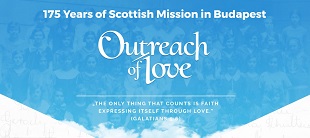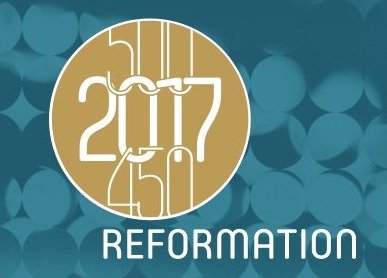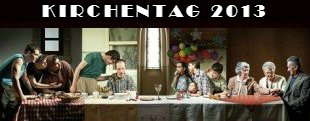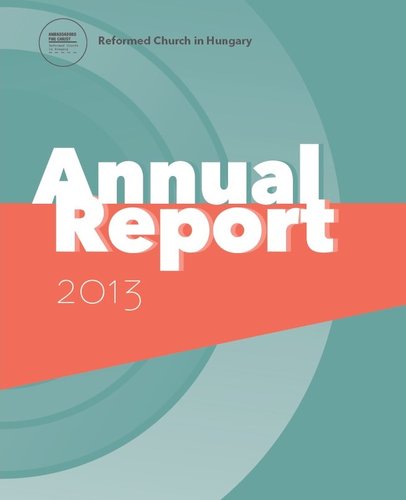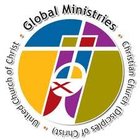In memory of the martyrs and the witnesses of faith - 1849
2012. október 16., keddIn the past 163 years Hungarians have annually remembered the heroes of the revolution and the war of independence, who were murdered on 6 October 1849, bearing in mind that in the Autumn of 1849 several other innocent victims, and among them, Reformed witnesses of faith were sentenced to death or imprisonment.
Lajos Kossuth in his old age still referred to 6 October, the most tragic day of the retaliation which followed the oppression of the 1848-49 war of independence, as the "Hungarian Calvary". This was the time the Habsburg Empire executed the most significant leading figures of the revolution and war of independence. Along with the thirteen officers murdered in Arad, Prime Minister Lajos Batthyány was also executed, killed by bullet in Pest. Beside the fourteen martyrs, many people were sentenced to death by the court-martial.
The years following the oppression were full of terror not only for the prisoners, but for everyone who in any way had supported the revolution. People feared that due to their activities related to the war of independence, the Habsburgs could summon them to court, which was why after 6 October 1849 thousands of people fled the country or remained hiding.
Some of these people were significant personalities of Hungarian Reformation. Ágoston Wartenslében (1804-1875) was found guilty of treason by the court-martial, and even though he made an attempt to prove that in 1828 he resigned from the military and no longer held the rank of lieutenant, his appeal was ignored and on 5 November he was sentenced to death by bullet. A few days later Haynau pardoned him and modified the sentence to eighteen years of imprisonment in chains, in the fort of Kufstein. After a year, however, he was freed, because his family's appeal was examined by the empirial court, and the proof of his resignation from the army was accepted. Wartenslében was released, but kept under close supervision by the Austrian secret police for years. His name has been preserved on the holy communion grail with which he presented the Gyömrő Reformed Church, and on the plaque of the Hungarian captive soldiers in the fort of Kufstein.
Mihály Könyves Tóth, a Reformed minister (1809–1895) had to suffer the worst of punishments. He genuinely supported the cause of the revolution, which he announced in several of his sermons. At first he was sentenced to death, then his sentence was changed to imprisonment. The minister was released in April 1856, but he was not allowed to take a teacher's or minister's position, so he became the archivist of the Reformed Collegium of Debrecen and the Reformed Church District of Debrecen.
Later, at the same place, he took the position of auditor, and finally became head of the bishop's office. From the 1860s he was once again allowed to serve as a minister, first in Karcag, then in Debrecen. A weekly magazine in December 1871 dedicated a long article to his deeds and his years of captivity. He was remembered as a man of powerful words and a liberal spirit. On 15 March 1848, and even later as the Russians entered the country and a national fast was ordered, his sermons encouraged many, and were used against his person by the secret police in the time of retaliation. When Mihály Könyves Tóth was arrested, and on his hearing he refused to take back his public statements in relation to the Austrian authority, he was to be hanged. The sentence was changed to twenty years of imprisonment in chains, of which he completed seven years partly in Olmütz, partly in Josephstadt.
Beside the soldiers and the ministers, Protestant artists were also supportive of the cause of the revolution. Several of them were summoned by the court-martial. The most famous worker of the Munkács iron foundry, the Reformed András Schossel (1824–1874) created the first Kossuth statue in October 1848. The small work of art was made of iron, and it carried the features of Classicism. The empirial police arrested him and he had to spend several years as a captive in the Munkács fort dungeon.
Mihály Tompa, Reformed minister (1817–1868) was an outstanding figure of 19th century Hungarian literature. He served in Beje and Kelemér, and then from 1852 to his death he was the minister of Hanva. During the war of independence he was a chaplain and befriended the poets Sándor Petőfi and János Arany. Due to his most famous poem, To the stork he had to suffer punishment from the Habsburg authorities. This poem depicts with powerful imagery the tragic times following the oppression of the war of independence.
Written by Millisits Máté
Translated by Burns Katalin
Contact us
Click here if you are interested in twinning.
Reformed Church in Hungary
Address: H-1146 Budapest, Abonyi utca 21.
PO Box: 1140 Budapest 70, Pf. 5
Email: oikumene@reformatus.hu
English, German and Korean language services in Budapest
Links
Recommended articles
-
Pastoral Letter in the Light of the Pandemic
Bishop Dr. István Szabó sent a pastoral letter of encouragement to the ministers serving in RCH’s congregations, expressing his gratitude for the persistence and creativity of the pastors.
-
RCH Joins in Pope's Call for Prayer
RCH published the call on congregations to join the initiative of Pope Francis, supported by ecumenical organisations, to unite in praying the Lord’s Prayer on Wednesday, 25 March, at noon.
-
English Speaking Worship Services Online
Each Sunday at 11 AM (CET) the St. Columba's Church of Scotland in Budapest, the international community of RCH invites you to join the worpship service on its facebook page.
-
Test of Humanity and Companionship
Reformatus.hu asked Dr. György Velkey, Director General of the Bethesda Children’s Hospital of RCH about the challenges of health care workers and ways of prevention against the pandemic.
-
All Church Events Suspended
In light of the coronavirus the Presidium of RCH requested congregations to suspend all church events with immediate effect. Beside restrictions, it calls for prayer, sobriety and responsibility.







